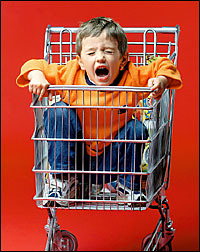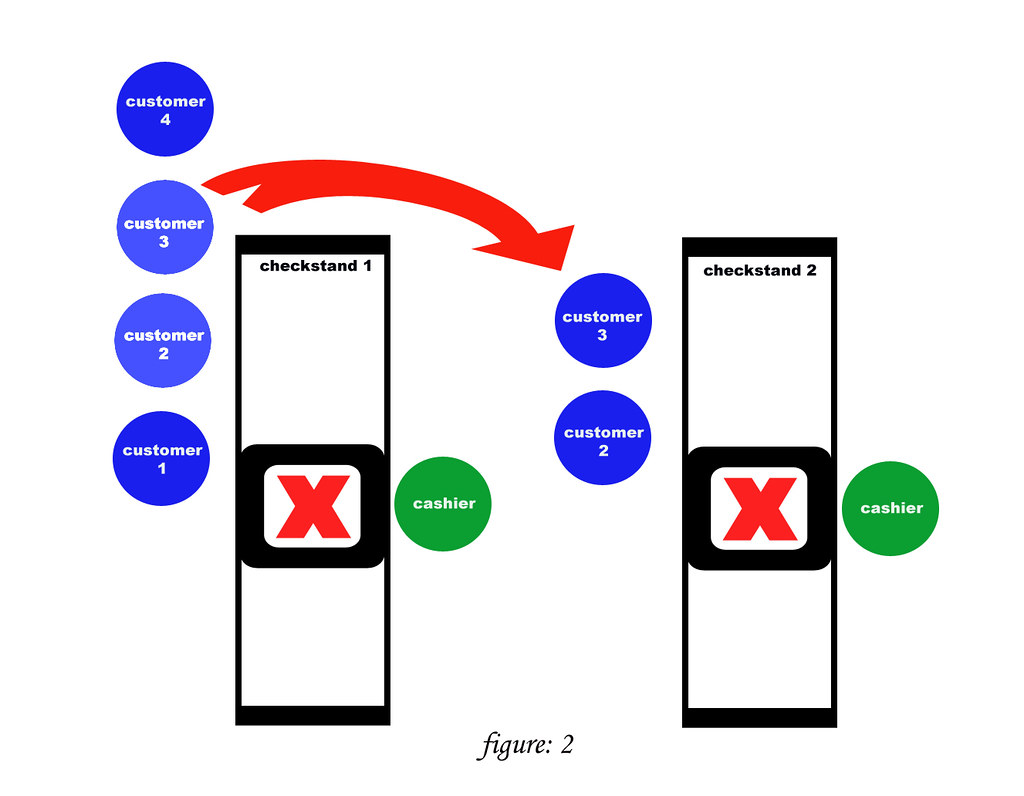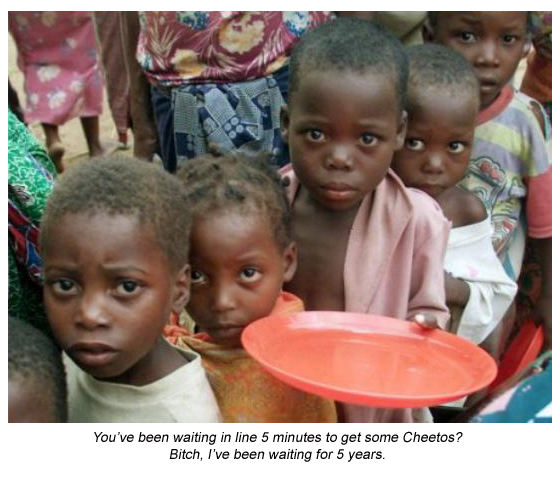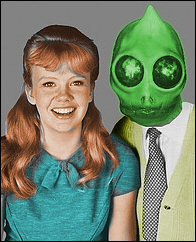 This post exists only as a direct result of a customer completely losing their mind and embarking on a screaming tirade of threats, violence. libel and slander. What followed was a multi-week campaign of attacks via Twitter and Yelp (using sock-puppets or drafting others to assist) and harassing phone calls to the job site and corporate offices. All from one customer that was miffed the customers in from of him did not let him enter a new line ahead of the when an additional check stand became available. I nearly lost my job (or at the least I was in peril of a financially disastrous demotion) due to the unhinged attacks of a customer who acted like a spoiled brat. I received the ire of the customer because I did not step in and escort him to he front of the line. This happens more than one would think.
This post exists only as a direct result of a customer completely losing their mind and embarking on a screaming tirade of threats, violence. libel and slander. What followed was a multi-week campaign of attacks via Twitter and Yelp (using sock-puppets or drafting others to assist) and harassing phone calls to the job site and corporate offices. All from one customer that was miffed the customers in from of him did not let him enter a new line ahead of the when an additional check stand became available. I nearly lost my job (or at the least I was in peril of a financially disastrous demotion) due to the unhinged attacks of a customer who acted like a spoiled brat. I received the ire of the customer because I did not step in and escort him to he front of the line. This happens more than one would think.
Unfortunately, businesses typically side with the customer no matter how deranged the complaint appears. This worry of being fired for "rudeness" is something grifters and revenge-minded for a perceived slight often use to their advantage, playing on the employees very-real concerns of what might happen if a customer doesn't get their way and even if they do, the worker doesn't display the right amount of obeisance or display that they don't know their place. Luckily for me, there was video recording the event.
Specifically and for the purposes of this study, the social contract often breaks down at the first moment when there are long lines of people waiting in a retail establishment and an additional cash register opens. Unfortunate recent events in our country have made it imperative that some people are in need of a refresher course on checkstand etiquette and the proper way to behave in a public retail environment.
Waiting in long lines in stores is unpleasant and I can sympathize. I would really like to get back that ten
 minutes of my life I lost when I was five people in queue behind the couple who insisted that they can buy DVDs with their WIC checks since they were purchasing children's movies. But the reactions by some waiting in line seems to be relative in nature. Oddly, the same person who shouts and screeches about a delay, throws a tantrum and threatens or acts with violence for waiting in line to pay for groceries is conversely just a few minutes later calm, patient and even pleased to be waiting in a long queue to rent a movie from an automated kiosk. I've personally witnessed an enraged customer upset over a harried coffee shop barista that are then placidly content to wait in a long checkout line at a big box discount store. They shockingly display such a personality change that it leads me to think they were replaced by a duplicate from an alien pod somewhere between the condiments section and the fifty-pack of toilet paper.
minutes of my life I lost when I was five people in queue behind the couple who insisted that they can buy DVDs with their WIC checks since they were purchasing children's movies. But the reactions by some waiting in line seems to be relative in nature. Oddly, the same person who shouts and screeches about a delay, throws a tantrum and threatens or acts with violence for waiting in line to pay for groceries is conversely just a few minutes later calm, patient and even pleased to be waiting in a long queue to rent a movie from an automated kiosk. I've personally witnessed an enraged customer upset over a harried coffee shop barista that are then placidly content to wait in a long checkout line at a big box discount store. They shockingly display such a personality change that it leads me to think they were replaced by a duplicate from an alien pod somewhere between the condiments section and the fifty-pack of toilet paper.It should be obvious that if a retail establishment does not have enough cashiers to serve the number of customers present it is not because no one cares or receives some sort of delight in alienating the main source of income. Rather it is because that is all the people they have dedicated to the checkstands. Most stores rely on personnel from the other departments to fill in as needed. Depending on the type of store employees from the children's department, jewelry counter, dairy or meat sections will back fill and assist the front end with helping customers. Wander a major retail clothing store and witness that register after register and department after department is vacant of employees. This is is due to the staff being pulled in multiple directions. Is the shelf that displays your favorite shirt empty and no one is around to help? This is probably because the person responsible for stocking the shirts has been cashiering in the shoe department for the last four hours.

The degree to which an employee is available to immediately assist is often subject to reasonable availability. Breaks, lunches and some other duties are mandated by State and Federal laws and company policies. Employees can and have been terminated from their jobs for the simple act of delaying their scheduled meal break to assist a customer or trying to finish a task in a timely manner. While unfortunate for the employee this is as much to protect the store from future litigation and spurious labor claims as much as protecting the rights of the worker.
So here is a step-by-step refresher course for both retail employees and customers on the proper checkstand etiquette for when an additional register opens. Feel free to print it and hand it out to those who are most in need of it.

Figure 3: The main drawback to the common sense application of the social contract as it relates to checkstand etiquette are the facts that politeness in our society is nearly extinct and "common sense is so rare it is a super power". Often, as in the example as diagrammed in Figure #3, the last customer in the line, who by virtue of arriving last and therefore has been in line the least amount of time, jumps ahead of the customers who have waited the longest. This is rude and violates basic checkstand etiquette and breaks the social contract.
The cashier is put in a difficult situation when this occurs. If the cashier points out that the other customers should be helped ahead of them they are typically berated by the line jumper. What also frequently happens is that if the cashier, seeking to avoid confrontation, does not stop the last customer from jumping the line the other customers take out their frustration on the employee in much the same manner. Rarely do the customers directly confront each other. Wisely, perhaps, though cowardly, merely because the employee is perceived as a safer and more vetted target for ire and is unlikely to react with violence as an unknown quantity, whereas a customer off the street purchasing an energy drink just might.
Figure 4: This diagram represents the typical temper tantrum a customer indulges in when they can't be first in line, even when they were the last to arrive on the scene. The product they were attempting to purchase (and would have if they had a little patience) is often thrown at the cashier, down the register aisle or at a display. The proper course of action would be for the customer to wait, return at a more opportune time or decide to take their business elsewhere, handing the product to the cashier so it can be restocked to prevent damage or spoilage. Unfortunately the tantrum is sometimes followed by a Yelp-ing Twitter-rage of dissembling and distortions motivated by revenge that can and has escalated into concerted real world and online harassment campaigns, bullying, slander and libelous acts. This is an extreme example though not all that uncommon and is familiar to many Marketing, Security and Human Resources departments.
Any person that thinks companies only track sales are kidding themselves. Blogs, forums and all kinds of media sites are browsed, sifted through and monitored. It is not an exaggeration to state that seemingly untouchable companies have been brought down by a negative yet truthful campaign. A sudden torrent of opinions (even seemingly coming from different people over an extended period of time are sometimes sock puppets created to cause problems for an individual or company) is analyzed with great effectiveness and the revenge motivated, spurious, harmful, libelous, slanderous and exaggerated claims are readily evaluated for what they are. Companies spend millions, if not billions, annually on marketing research and analysis.
So let's clarify a few things clear for those people who feel too self-entitled to wait their turn and are caught up in the personal horrors of their First World problems:
- It is not poor customer service to first assist those who arrived before you.
- It is not rude on the part of the employee to guide into the newly opened checkstand customers who have been waiting the longest.
- Calls for the employee to be fired for acting according to common politeness are ridiculous.
- Threats, violence and acting out will not be tolerated, so don't be surprised if you are asked to leave and not return. Workplace violence is a concern and threats are taken seriously.
- Just about all stores have video cameras and all manner of claims are easily investigated so tell the truth.
- Cyber-bullying, online personal attacks, harassment campaigns and libelous tales of how terribly you were treated could be actionable by a company and employees that may suffer a loss of reputation and income due to statements that are not factual.
- A threat to "never shop there again" is...Well...No threat at all. Few establishments encourage the repeat business of the tantrum-throwing customer.
- Don't be a jerk.




























I feel your pain. While I can be a jerk at times, I really don't understand the rage regarding check out line ups.
ReplyDeleteIn most cases that is, Walmart tends to drive me crazy. The ones here always have 10+ people waiting in every line, which screams understaffed.
Though at most places, staffing levels, dictate you can't always have enough places on registers, since the rush is usually only a couple hours.
I always feel kind of bad for people working cashier, when they get someone trying to pay in change, or really slow for some reason, you get there and the cashier apologizes. It's not your fault that someone can't count in a timely manner.